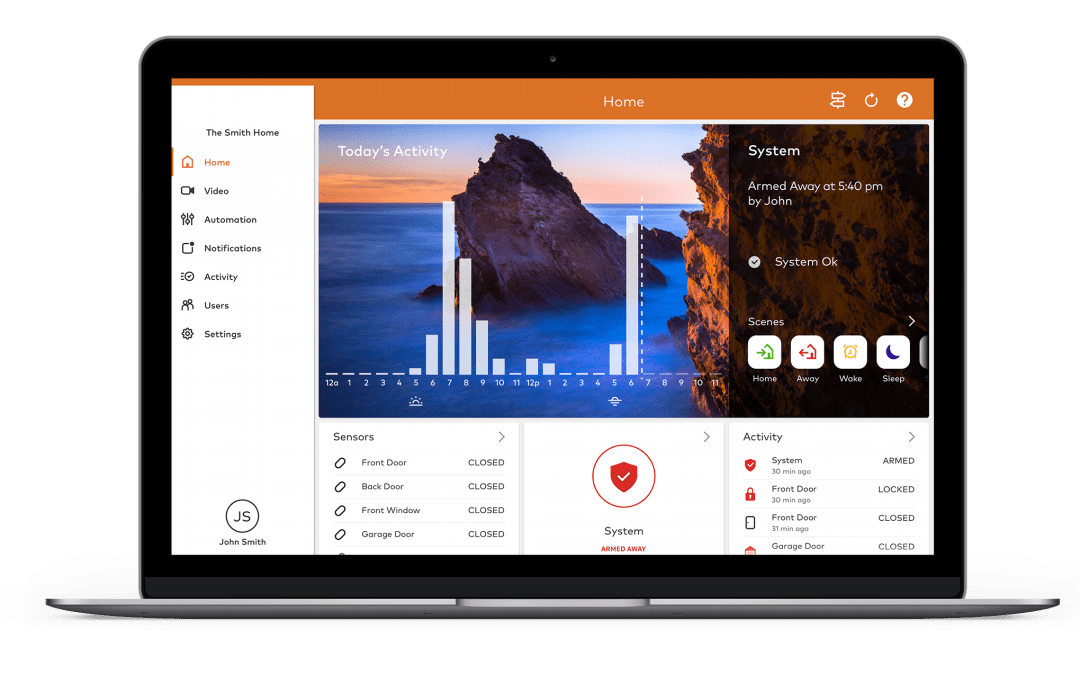In my business, I have a lot of explaining to do when I get a call for services. Many times, it is just after a commercial was watched on TV or heard on the radio about home automation. People want to be able to turn on their lights or control the garage door from their phone. It all looks so easy.
More and more everyday companies are getting into the home automation business. It is not their primary business, but an additional service. For those companies that are already in your home, the hard part, gaining your trust, is done. What they don’t tell you is the real cost and the real requirements that are involved with making all of this magic work reliably.
What do you get with your home automation service?
Full disclosure, I have been in the home automation business for over a decade. Yes, I will admit I started well before the cable and phone companies started with home automation. I am not here to put down the products they provide. No, I don’t want to do that. I do, however, want to differentiate myself as a home automation professional vs. being a cable TV installer. These people may be highly competent individuals in their respective trades. However, I believe it takes years of experience to truly become a home automation professional.
Imagine how a professional car mechanic felt the first time he encountered the computerized engine. While he may be a very competent mechanic, his whole world changed when low-voltage components were introduced. The gist of how cars fundamentally operate has not changed, but the means to achieve this operation has. He must acquire a new set of tools and skills to continue to operate effectively. The same can be said for your typical cable/phone installer. No longer are they simply pulling a wire into your home. With home automation applications, they may be expected to connect lighting, HVAC, cameras, and security devices.
Back to that home automation commercial
Now, back to what I was first going to talk about. You are sitting in front of your television and you see a commercial. In this commercial an individual is looking at their phone and smiling because they just confirmed to themselves that the lights in the bedrooms are off and the garage door is closed. It looks so easy and provides peace of mind.
The home in the commercial is not unlike your home in any major way. It could be your home! You call the number from the commercial and request more information. Someone comes to your house to apply high pressure sales techniques and gets you to sign a contract. However, when it is all said and done, you cannot control your lights or your garage door like the person from the commercial. You call support and they tell you that you did not buy those options. Now you are locked in a contract, your system does not do what you thought it was going to do and you are not happy! The salesperson comes back and provides you with a quote to add those features. WOW! You wish you would have known what this was really going to cost 2 months ago.
Smart Home marketing vs. reality
The marketing for Smart Homes can be very misleading. If there is a feature displayed in any advertising, you can bet it cost extra. Lighting for example can be quite costly to implement. However, it is likely among the most widely used elements of a smart home. You turn your lights on/off almost every day. But to do this in a smart home requires special equipment that can range in price from tens to hundreds of dollars per lighting load. It is knowing this prior to getting started that can help make your Smart Home transformation a much more pleasant experience.
Everything mentioned above requires an entirely different set of tools and experience. Let me also say that in the rare cases when all the devices that are going to be connected work according to the installation instructions, experience plays a smaller role in the process. The thing is, this rarely happens. In most cases devices rarely enroll or install according to the instructions. Even if they do, it requires someone with a lot of experience to recognize issues before they occur and address them proactively.
My experience with customer’s dissatisfaction with many of these companies has revealed that transparency is a foreign concept to many Smart Home companies. Having been a part of the evolution of the smart home, I have seen many disappointed faces at the end of a projects. In most cases, what appeared to be an affordable project in the beginning, turns out to cost a lot more money in the end. All the while, very little communication about why the cost of the project was up by double digit percentages.
A different approach for customers and home automation
My years and view of the industry has led me to approach a Smart Home transformation differently. It has been a mission for me to make sure the lines of communication are always open and minimize the surprises as much as possible.
I recommend meeting with a professional home automation professional to help you in your decision-making process. You want all the details so you can understand the entire process. I work with many individuals and families who have an on-going plan to get to the home automation they want. Smaller companies are generally easier to work with because building strong relationships with their customers is a high priority.
If you want to know more about what is really involved in home automation and how you can make it work in your house, get in contact with me. I would love to spend the time to help you see the benefits and understand the process and costs.
Mike


